Module 3 - Benjamin-Mills
Module 3 - Benjamin-Mills
Module 3 - Benjamin-Mills
Create successful ePaper yourself
Turn your PDF publications into a flip-book with our unique Google optimized e-Paper software.
EP2.4<br />
The shapes of a-amino<br />
acids<br />
This activity reinforces your reading of Chemical<br />
Ideas 3.3 and 3.6 on the shapes of molecules and<br />
optical isomerism.<br />
Requirements<br />
●<br />
●<br />
molecular model kit<br />
molecular modelling software (optional)<br />
What you do<br />
1 Draw a full structural formula for glycine. Mark on it the values you would<br />
expect for the bond angles.<br />
2 Draw full structural formulae for the following amino acid –R groups,<br />
showing clearly any lone pairs. Mark on each structure the values you would<br />
expect for the bond angles.<br />
a valine b serine c methionine d aspartic acid.<br />
3 Build models of the structures in steps 1 and 2. Check that the bond angles<br />
you predicted were correct, and see how the representations of the structures<br />
on flat pieces of paper compare with their three-dimensional shapes.<br />
4 Build a simplified model of a general a-amino acid by using:<br />
● a hydrogen atom for hydrogen<br />
● a carbon atom for the –R group<br />
● an oxygen atom for the –COOH group<br />
● a nitrogen atom for the –NH 2<br />
group.<br />
You now have a central carbon atom surrounded by four different groups.<br />
Each group (–H, –R, –COOH and –NH 2<br />
) is represented by a different<br />
coloured atom. (This removes some of the ‘clutter’ of bulky groups so that<br />
you can see the arrangement round the central carbon atom clearly.)<br />
Build a second model which is the mirror image of the model you have<br />
just built. Confirm to yourself that the two structures represent<br />
enantiomers (optical isomers).<br />
5 Stand your two models from step 4 so that the H atoms point upwards. Look<br />
down each one from the H atom towards the central carbon atom. One<br />
enantiomer will have the sequence<br />
COOH, R, NH 2<br />
(CORN)<br />
in a clockwise direction. This is the L-amino acid, the configuration that<br />
occurs in proteins. The other structure corresponds to the D-amino acid;<br />
D-amino acids occur in some bacterial peptides.<br />
COOH<br />
COOH<br />
H<br />
H<br />
C<br />
C<br />
H 2 N<br />
R<br />
R<br />
NH 2<br />
CORN<br />
L-isomer<br />
CORN<br />
D-isomer<br />
Figure 1 Looking down the H–C bond from hydrogen towards the central carbon<br />
atom<br />
6 Replace the –R groups of your amino acid structures with H atoms, so that<br />
you have two models of glycine. Confirm that optical isomerism is no longer<br />
possible without four different groups around the central atom.<br />
„ Salters Advanced Chemistry 2000 – see Copyright restrictions<br />
179


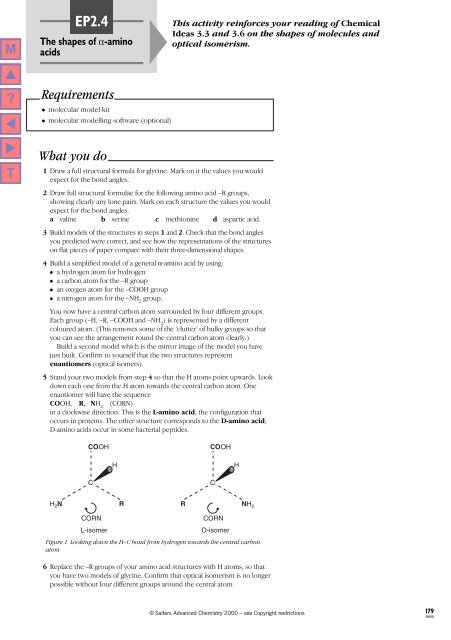
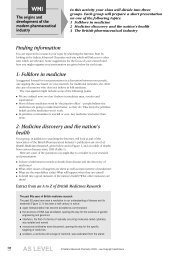
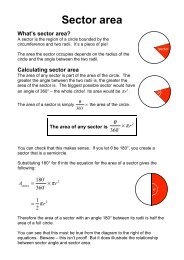
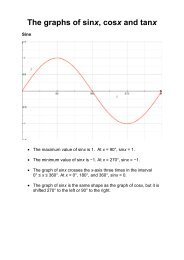
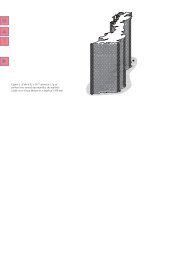

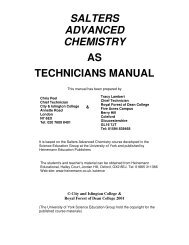



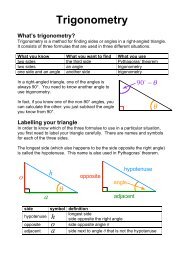
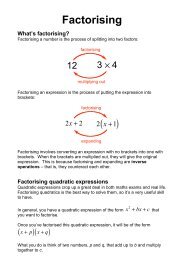
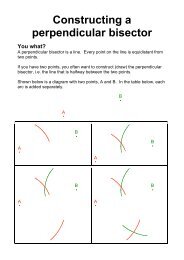

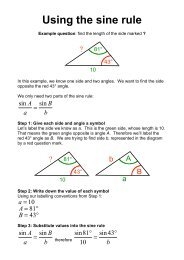
![ISI Web of Knowledge [v.4.10] - All Databases Results - Benjamin-Mills](https://img.yumpu.com/39253071/1/184x260/isi-web-of-knowledge-v410-all-databases-results-benjamin-mills.jpg?quality=85)